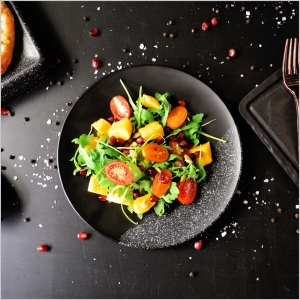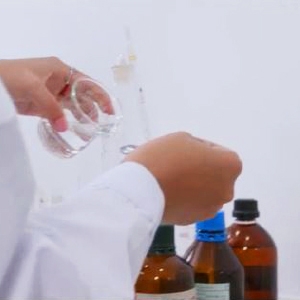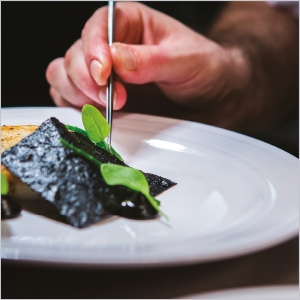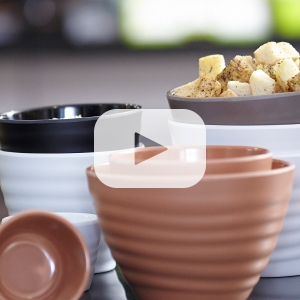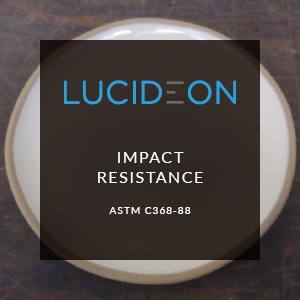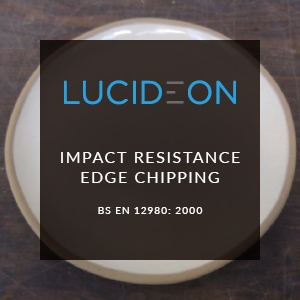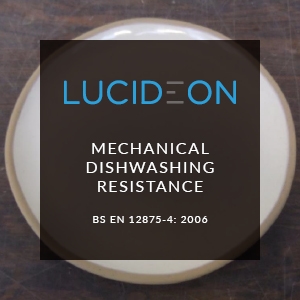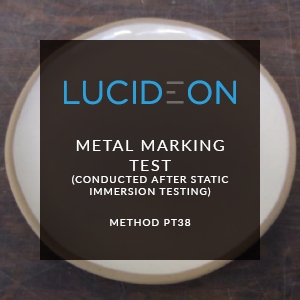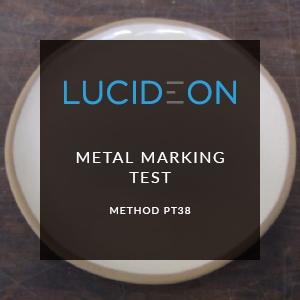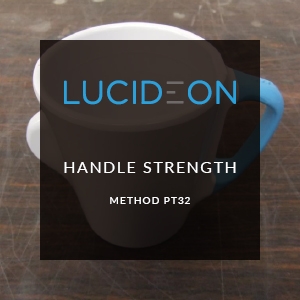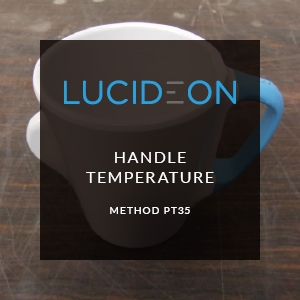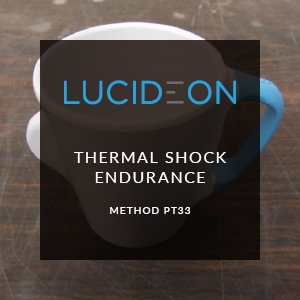PRODUCT TESTING
Dalebrook were the first company in Europe to introduce Melamine to the professional caterer back in the 1980s.
We pride ourselves on the continual development of our product performance and raw materials.
We have always taken product safety seriously and when designing a new product or updating the material we use,
have rigorously tested it from source, during manufacture and supply.
Material Testing
One of the most common tests is to prove the material used in production is fit for purpose and safe to come in to contact with food. This is independently verified by laboratory testing on a regular basis to European Commission standards which align with local standards in regions across our global customer base.
The test is a mandatory European Commission regulation and is required to allow goods to be imported and exported into and from Europe.

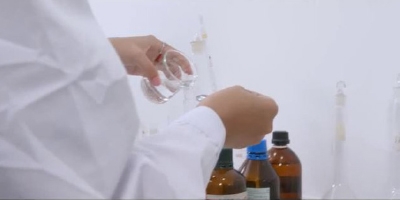
European Commission Regulation NO 10/2011 & 2017/752 and Regulation 1935/2004
• European Commission Regulation No 10/2011 & 2017/752 and Regulation 1935/2004 on Overall Migration Food simulant: -3% (w/v) acetic acid in aqueous solution.
• European Commission Regulation No 10/2011 Annex1 & 2017/752 and Regulation 1935/2004 on specific Migration of Melamine Food simulant: -3% (w/v) acetic acid in aqueous solution.
• European Commission Regulation No 10/2011 Annex1 & 2017/752 and Regulation 1935/2004 on specific Migration of Formaldehyde Food simulant: -3% (w/v) acetic acid in aqueous solution.
Independent Testing Agency / Port Authority Testing / Local Authority Testing
Dalebrook regularly instructs independent testing agencies to carry out material testing at source and this is again independently verified by further random testing by local port authorities as it enters the European Union and further random testing is carried out by local authority regular inspections of our stock stored in our warehouse.

We believe that Melamine is the product of choice for the Professional and out performs Ceramics in many ways.
NEXT GENERATION OF PROFESSIONAL TABLEWARE
Product Testing Results
As a leader in material testing for the Ceramics industry we have employed the services of LUCIDEON Ltd to independently prove the outstanding performance properties of Dalebrook Melamine versus traditional Ceramic tableware.
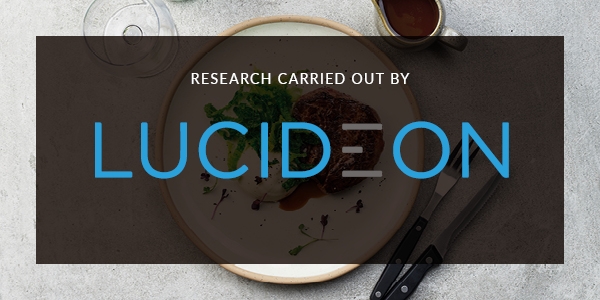
Dalebrook Melamine Vs Traditional Ceramic
Melamine Tableware Testing
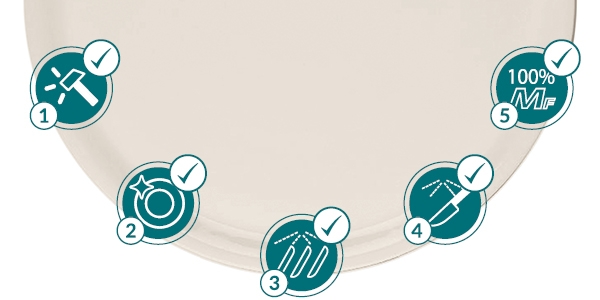
Next Generation Melamine
| Test: | Impact Resistance – ASTM C368-88 |
| Description: | This tests the plate at graduating forces to see at what point they break. |
| Results: | The melamine plate strength factor was 275.51 lpf/in² and the ceramic plate strength factor is 70.75 lpf/in² |
| Dalebrook melamine plates are 4 times stronger than the equivalent ceramic plates | |
| Click here to see the full test results |
| Test: | Dishwasher Test – BS EN 12875-4: 2006 |
| Description: | Purpose of this is to test to see if the products can withstand being washed in the dishwasher. |
| Results: | Both Melamine and Ceramic plates performed the same. |
| Dishwasher safe. As good as new after 500 Cycles (At 75˚C). Conforms to BS EN 12875-4: 2006 | |
| Click here to see the full test results |
| Test: | Dishwasher Test – BS EN 12875-4: 2006 |
| Description: | Purpose of this is to test to see if the products can withstand being washed in the dishwasher. |
| Results: | Both Melamine and Ceramic plates performed the same. |
| Dishwasher safe. As good as new after 500 Cycles (At 75˚C). Conforms to BS EN 12875-4: 2006 | |
| Click here to see the full test results |
| Test: | Metal Marking after Dishwasher Test – Method PT38 |
| Description: | The purpose of the test is see how well the plates stand against various metal utensils following the dishwasher test. Three grades of steel were tested. |
| Results: | The melamine slightly marked – removable washing warm water & soap at 45 degrees. The ceramic plate had no marking. |
| Scratch Resistant after 500 washes | |
| Click here to see the full test results |
| Test: | Microbiological Test |
| Description: | The purpose of this test was to see if bacteria bred quicker on ceramics than melamine. |
| Results: | Dalebrook melamine had less bacteria than the ceramic plate and mug after this test |
| Our melamine helps to prevent the breeding of infection-causing bacteria in comparison to ceramic equivalent. Scientifically proven to harbour less bacteria than ceramic equivalent. | |
Traditional Ceramic
| Test: | Impact Resistance – ASTM C368-88 |
| Description: | This tests the plate at graduating forces to see at what point they break. |
| Results: | The melamine plate strength factor was 275.51 lpf/in² and the ceramic plate strength factor is 70.75 lpf/in² |
| Dalebrook melamine plates are 4 times stronger than the equivalent ceramic plates | |
| Click here to see the full test results |
| Test: | Edge Chipping - BS EN 12980:2000 |
| Description: | This tests to see at what point the edges chip |
| Results: | The melamine plate did not chip at the greatest force of >0.73 the ceramic plate chipped at 0.33 |
| Dalebrook melamine plates are twice as resistant to chipping as ceramic plates. Edge Chip Resistant. Conforms to BS EN 12980:2000 | |
| Click here to see the full test results |
| Test: | Edge Chipping - BS EN 12980:2000 |
| Description: | This tests to see at what point the edges chip |
| Results: | The melamine plate did not chip at the greatest force of >0.73 the ceramic plate chipped at 0.33 |
| Dalebrook melamine plates are twice as resistant to chipping as ceramic plates. Edge Chip Resistant. Conforms to BS EN 12980:2000 | |
| Click here to see the full test results |
| Test: | Edge Chipping - BS EN 12980:2000 |
| Description: | This tests to see at what point the edges chip |
| Results: | The melamine plate did not chip at the greatest force of >0.73 the ceramic plate chipped at 0.33 |
| Dalebrook melamine plates are twice as resistant to chipping as ceramic plates. Edge Chip Resistant. Conforms to BS EN 12980:2000 | |
| Click here to see the full test results |
| Test: | Microbiological Test |
| Description: | The purpose of this test was to see if bacteria bred quicker on ceramics than melamine. |
| Results: | Dalebrook melamine had less bacteria than the ceramic plate and mug after this test |
| Dalebrook melamine helps to prevent the breeding of infection-causing bacteria in comparison to ceramic equivalent. Scientifically proven to harbour less bacteria than ceramic equivalent. | |
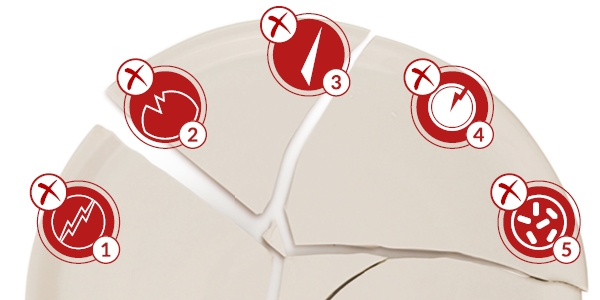
Melamine Drinkware Testing
Healthcare
Melamine Mug
| Test: | Handle Strength – Method PT32 |
| Description: | This is to test the handle strength used with controlled gradual force. |
| Results: | Omni Melamine Mug did not break at the highest force of >0.54 ft.lbf the Ceramic Beaker handle broke at a mean of 0.26 ft. lbf |
| Dalebrook melamine cups are twice as strong as equivalent ceramic cups | |
| Click here to see the full test results |
| Test: | Thermal Shock Endurance - Method PT33 |
| Description: | This tests the products by subjecting them to varying temperatures between 13°C and 98˚C. It looks for any changes to the products including cracks and breakages. |
| Results: | Melamine and Ceramic achieved the same results and passed the test with no changes. |
| Melamine performs as well as ceramic when subject to temperature changes. Thermal Shock Resistant. | |
| Click here to see the full test results |
| Test: | Handle Temperature – BS EN 8654:2015 |
| Description: | This tests the temperature of the handle when filled with boiling water. |
| Results: | Both mugs passed the test, however the Omni mug’s handle had an average temperature of 20°C and the ceramic beaker had an average temperature of 30°C. This means the melamine mug is better at retaining the temperature. |
| Our melamine cups retains temperature better than the ceramic equivalent. Safe to touch handles – cooler than ceramic. Conforms to BS EN 8654:2015. | |
| Click here to see the full test results |
| Test: | Handle Temperature – BS EN 8654:2015 |
| Description: | This tests the temperature of the handle when filled with boiling water. |
| Results: | Both mugs passed the test, however the Omni mug’s handle had an average temperature of 20°C and the ceramic beaker had an average temperature of 30°C. This means the melamine mug is better at retaining the temperature. |
| Our melamine cups retains temperature better than the ceramic equivalent. Safe to touch handles – cooler than ceramic. Conforms to BS EN 8654:2015. | |
| Click here to see the full test results |
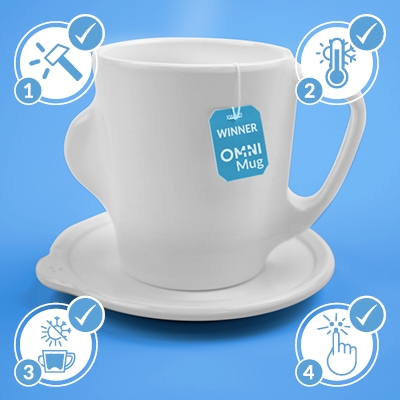
Traditional
Ceramic Mug
| Test: | Impact Resistance – ASTM C368-88 |
| Description: | This tests the plate at graduating forces to see at what point they break. |
| Results: | The melamine plate strength factor was 275.51 lpf/in² and the ceramic plate strength factor is 70.75 lpf/in² |
| Dalebrook melamine plates are 4 times stronger than the equivalent ceramic plates | |
| Click here to see the full test results |
| Test: | Edge Chipping - BS EN 12980:2000 |
| Description: | This tests to see at what point the edges chip |
| Results: | The melamine plate did not chip at the greatest force of >0.73 the ceramic plate chipped at 0.33 |
| Dalebrook melamine plates are twice as resistant to chipping as ceramic plates. Edge Chip Resistant. Conforms to BS EN 12980:2000 | |
| Click here to see the full test results |
| Test: | Edge Chipping - BS EN 12980:2000 |
| Description: | This tests to see at what point the edges chip |
| Results: | The melamine plate did not chip at the greatest force of >0.73 the ceramic plate chipped at 0.33 |
| Dalebrook melamine plates are twice as resistant to chipping as ceramic plates. Edge Chip Resistant. Conforms to BS EN 12980:2000 | |
| Click here to see the full test results |
| Test: | Microbiological Test |
| Description: | The purpose of this test was to see if bacteria bred quicker on ceramics than melamine. |
| Results: | Dalebrook melamine had less bacteria than the ceramic plate and mug after this test |
| Dalebrook melamine helps to prevent the breeding of infection-causing bacteria in comparison to ceramic equivalent. Scientifically proven to harbour less bacteria than ceramic equivalent. | |
*Research carried out by Lucideon. Full research results are available in the links below.
Full Research Results
Carried out by Lucideon
-Green.png)
-White.png)
